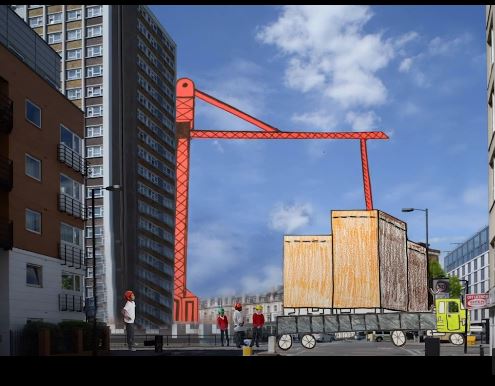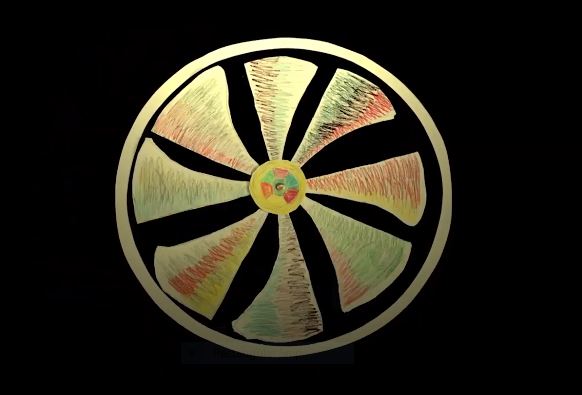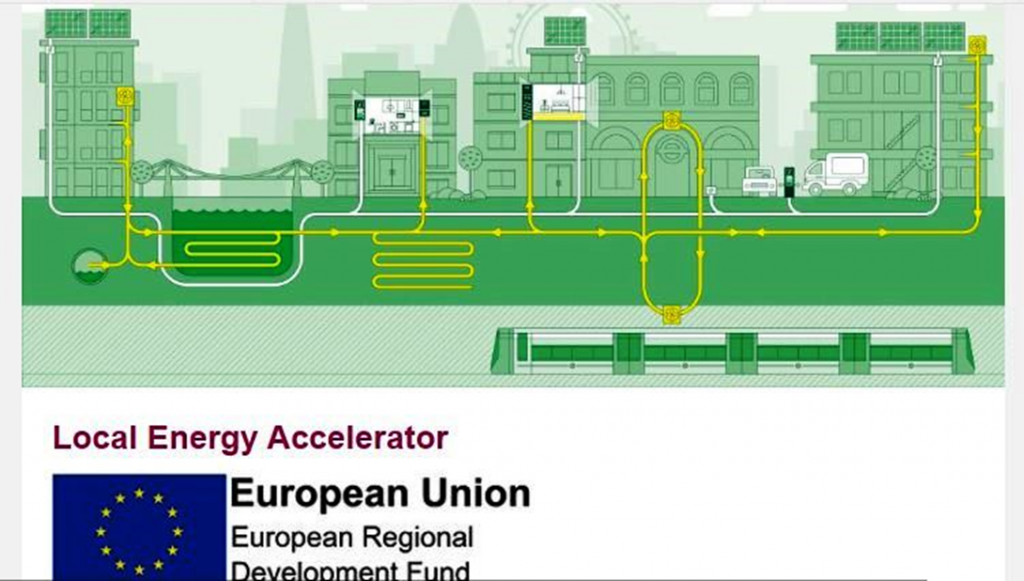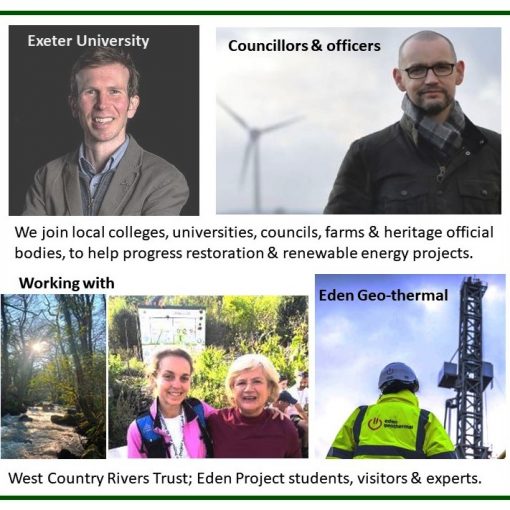
20th MAY 2022
It’s well over a decade since I was living in London myself, but Carole’s blog last week brought back many memories. It made me decide to continue the London theme a little longer, looking into my favourite topic of locally-based energy schemes.
There is no shortage of local energy initiatives in and around the capital city, mostly spear-headed by the mayor, Sadiq Khan. He has set a target to supply 15 per cent of London’s energy from renewable, local sources by 2030. And his team emphasise that a key way to support de-carbonisation of both electricity and gas grids in London is by increasing the proportion of renewable and de-centralised energy coming from local power and heating sources.
Carole explained last time that solar and wind are not great energy options for individual London houses. But they may be more appropriate for blocks of flats and offices, sometimes with quite easy opportunities to use the power on the same site, in what is called a Micro Grid. An example is the Vauxhall Energy project at Vauxhall Gardens estate, where a solar installation financed by a community share offer powers the local community and any excess energy is sold back to the network. Local initiatives like this, that literally put power in the hands of the community, whilst reducing its carbon footprint, show how micro grids could transform the UK’s energy sector. This is exactly the type of model I hope to create, for the post code areas near to Meadow Barns. The Vauxhall project was set up by ‘Repowering.Org’, which concentrates on small scale solar installations with local ownership.

Full details are available here https://www.repowering.org.uk/wp-content/uploads/2020/05/Vauxhall-Energy-Case-Study.pdf
Community shares is one funding model, and a good one; but for more adventurous/experimental schemes extra seed funding is usually needed. Sadiq has therefore created an organisation with an unhelpful acronym LEA (because LEA always meant London Education Authority in my day!); this time round it stands for Local Energy Accelerator and offers a source of £6m of funding, along with expertise and support to organisations which aspire to develop clean and locally generated energy projects.
LEA plans include district energy networks that use a variety of renewable heat sources, including river water and waste heat from London Underground (both sound brilliant), and energy technologies such as heat pumps, solar panels, batteries and smart electric vehicle charging to transform the way London generates, supplies and uses clean local energy in buildings and transport.
RIVER WATER HEAT
As it happens, my colleague Rupert, who spurred me on to create the Hydro petition, told me an inspiring but also sad and frustrating story of river water heat for London.
In 1951 the Royal Festival Hall on the South Bank was heated entirely from the River Thames using a ‘water source heat pump’. The system used gas powered Merlin aircraft engines to drive the refrigeration compressors that removed the heat from the river water and transferred it to the theatre. It actually turned out to be too effective and overheated the building, so was, using typical government logic, replaced with a traditional low efficiency gas boiler.
Put into perspective, if the streams and rivers of the UK were used as a source of heat via heat-pumps they could contribute around 37 million tons of oil equivalent (toe) per year, or close to the total energy required by the whole domestic sector. This is based on 50% of the average river flows and a nominal temperature drop of around 5o C. And the figure takes no account of the infinite thermal input from estuaries or the sea, or from the thermal gain from the atmosphere between heat-pump sites.
I should like to challenge Rupert to explain how he has arrived at the figures, but there are other things on his plate, so he is not available to answer right now.

WASTE HEAT from the TUBE
This phrase really caught my imagination. Hunting for more info, I was delighted to find an extra-ordinary film on Youtube (links below), one that I urge you to make time to watch. It describes the Bunhill Heat and Power network plans in Islington & I absolutely love that a class of children of the Moreland Primary School have been helped to grasp and explain such advanced STEM innovations.
Because I am now so involved in the idea of a warm water mine project, using the same types of heat exchange and compression methods, I decided to evaluate the film thoroughly. Does it work well to explain the concept? And indeed is film the best approach to teaching such tricky STEM?
- The introduction is very clear and lovely, using hand-drawn images of tube trains generating hot air, which then rises via a ventilation shaft. The children convey their messages very well.
- Next we see diggers removing the old tube entrance building around the ventilation shaft, but it isn’t very clear what is being installed in its place. Is this their ‘new energy centre?’ Perhaps the image could have given an impression of what will happen inside.


- Next we are told ‘warm air will be pushed into pipes, by a great big fan’. Aha, this could be a negative; how is the giant fan driven? Is that powered by sustainable means, or not? In Cornwall, if we have to pump a warm gas or liquid from a mine shaft into a heat pump, I wonder if we can use hydro to run the pumps? Does one cancel the other out or will there be sufficient power to justify the expensive installation costs?
- The film moves on, to the most tricky section explaining that compression can increase the heat of the gas to very high levels and convert it to a kind of liquid. I find this really confusing, because I wanted to use the analogy of a kettle … cold liquid in, heat applied –> turns water to steam (gas). Then as it cools, the steam hits a cold window and cools, back into water. But no, apparently here everything works the other way around. I still do not understand what the mysterious very hot liquid is, nor the gas. But you can be sure I intend to find out!
- Looking at the visuals, I don’t know what the rectangular shape with a kind of handle is, at the top here. I like the bicycle pump image, to show compression happening, but with no label to say what it is, it’s unlikely to make much of an impression on viewers.

- After the compression into a liquid, I fear someone decided to make a cut, so they left out a very essential element, which is that the very hot liquid (never leaving its own tube) is put into ordinary cold water, and heat is transferred. The warmed up water ‘is then sent into pipes to heat homes’.
- Having missed out the vital fact about heat transference, the concluding section of the film is also quite confusing. It tries to explain how the hot liquid, after giving away its heat, reverts to being a gas and goes back into the cyclical system, to start the process all over again.
LINKS
Press release with the link is here https://www.islington.media/news/bunhill-2-launch-pr
And directly to Youtube is here https://www.youtube.com/watch?v=bOrEGpY2QHI
CONCLUSIONS
Film is an engaging and attractive medium for sharing information. But, you need to dissect it into short clips, watch and listen to each clip 2 or 3 times at least and question carefully.
An alternative, which – as a dunce of a scientist – I find much easier, is to design and make a working model. This is one of our most popular approaches at Meadow Barns.
We try always to use left-over scraps of materials and don’t worry about making something look sophisticated. For instance, I made this little example to show the cold liquid or gas down and hot coming up, from a mine shaft or geo-thermal source below ground.


It is hard to see the detail (sorry) but our model comprises a see-through tube, marked blue for cold and red for hot using a permanent marker pen.
Then we squeezed the tube down inside a copper water pipe, with the loop exposed at the bottom. This is where the liquid or gas in the tube will absorb heat from mine water.
At the top, you can see the 2 ends emerging. In our next stage of invention these will connect to a compressor (yes we will give a bicycle pump a go!) and then connect into a heat exchange engine system.
LEA FUNDING MODEL

The afore-mentioned LEA will focus on helping projects needing support to deliver carbon savings but their web info says that, preferably, projects should be in their final stages. Now why, I wonder, is there a need to concentrate on projects in their final stages? I was amazed to discover the reason could be … the £s behind this are not pounds but Euros, left over from our membership of the EU! I imagine we all believed that EU funding had died away years ago, but (as I know from applications to funds in Cornwall) the actual final cut-off for spending it will be July 2023.
I set out to discover more about EU left-overs. This statement on the government website does little to help one understand what money is left, how it will be used and when it will cease:-
Payments after leaving
The UK is participating in some EU programmes from January 2021 as a ‘third country’. The UK will make a financial contribution to participate in such programmes including Horizon Europe, which is the EU’s research and innovation programme.
I am intrigued. What is Horizon Europe and what makes it so important that our normally blatantly ‘Euro-phobic’ bosses are prepared to buy in? (notice how quiet they have kept about it BTW).
Well it is a scheme with a major focus on climate resilience and innovation, funded to the tune of €95.5 billion and running until 2027. It’s amazing that we are allowed to belong, but it does seem there is a very long list indeed of other non EU participants around the world, classified as third countries and signed up to the climate change missions – https://ec.europa.eu/info/news/updates-association-third-countries-horizon-europe_en
Are we bothered about the money sources, so long as researchers and inventors are being supported? I’m not sure. But what I do know is, since we are almost at the anniversary of Green Fridays Blog 1, which coincided with the G7 visit to Cornwall, I will soon be looking into how the G7 legacy funds are being spent. How much has been achieved in just 12 months? Let me know, if you have any knowledge or stories to share about this. Thank you!




